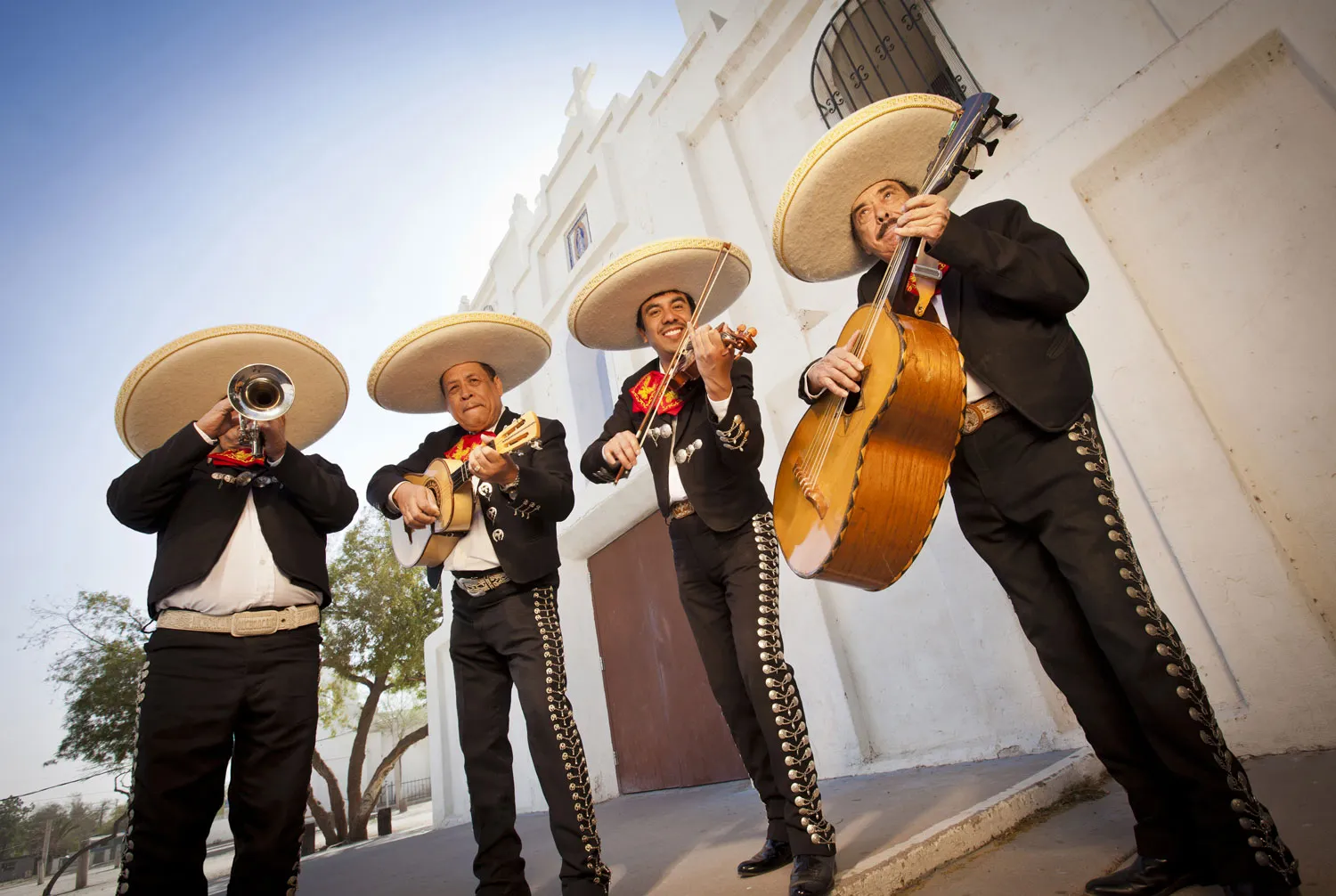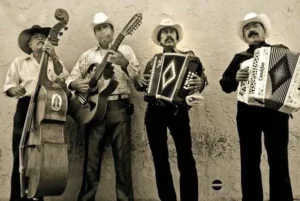Exploring the Types of Mexican Music: A Journey Through Vibrant Sounds

The types of Mexican music are part of the national heritage in Mexico; they are both a part and a reflection of the citizens.
The regions connect with the melodies, and these unite the country. This is how we can describe the types of Mexican music, as they represent an essential part of Mexican identity, with each region having a predominant genre.
In the capital region, the north, the south, and the Pacific, each area has its own unique characteristics.
The influence of Mexican music is so significant that it has special nominations in the Latin Billboard Awards, among other awards. Figures like Juan Gabriel, Vicente Fernández, Los Ángeles Negros, among others, have elevated Mexican folklore to great heights.
The types of Mexican music are closely related to the region, European influence, indigenous roots, and other social variations.
Perhaps we have heard more about mariachi or rancheras, but in Mexico, the birthplace of great performers, there are many more genres with their own history.

Foreign Influence and the Evolution of Mexican Music
It is estimated that Mexico has about 22 musical genres, from which an incredible 3,453 sub-genres emerge.
Today, with globalization, the internet, and various social media platforms, genres that were once very regional have now significantly expanded worldwide.
Of course, we cannot overlook the influence of Mexicans in the United States, and in turn, their influence on the rest of the world. The types of Mexican music are expanding, growing, and gaining strength, with original talent and a strong presence.
Thus, we can talk about the types of Mexican music in a regional sense, a general term that encompasses banda, corridos, norteña, sierreño, and other genres.
However, they have become a global phenomenon, topping music charts and reaching new audiences as they cross more and more borders.
An important fact: according to Uriel Waizel, editorial leader at Spotify Mexico, the types of Mexican music have grown 400% worldwide on Spotify in the last five years.
On YouTube, Peso Pluma surpassed Taylor Swift and Bad Bunny to become the most listened-to artist of 2023 on the platform.
For example, the single “Ella baila sola” by Eslabón Armado and Peso Pluma surpassed one billion streams on Spotify in December 2023, becoming the first regional Mexican music hit to break into the top 10 of Billboard’s Hot 100 list, reaching the number 4 spot.
Days later, the collaboration between Bad Bunny and Grupo Frontera, “Un x100to,” reached the number 5 spot.

Types of Mexican Music: The Most Influential
Here are the main types of Mexican music:
Mariachi
Mariachi is the most popular type of Mexican music, having become a tradition in many nations around the world, especially for dedicating songs and love sonnets, and for birthdays.
This genre is the traditional sound in Mexico; no party is complete without “Las Mañanitas” or a serenade.
Mariachis emerged in the 16th century in Cocula, Jalisco, where the first mariachi group played the violin and guitar, adopting their own sound and style.
This genre later spread to the states of Nayarit, Colima, and Michoacán. The mariachi sound was heard in public squares, and they were often called to enliven popular festivities.
By the 18th century, mariachi was already a popular sound, with more instruments like the vihuela and guitarrón being incorporated.
President Porfirio Díaz appreciated the genre and would request “Las Mañanitas” to be sung for his birthday celebrations.
In Mexico, mariachi music spread widely as corridos, characterized by narrating a story or event about what is happening in Mexico.
This type of Mexican music emerged during the Mexican Revolution as a way to testify to the events. It is believed to have roots in Spanish romance, though its style and sound were adapted by Mexican popular culture.
Among the great figures of Mexican mariachi, we can mention: Lucha Reyes, Jorge Negrete, Antonio Aguilar, Pedro Infante, Javier Solís, Miguel Aceves Mejía, José Alfredo Jiménez, Aída Cuevas, Lucha Villa, Juan Gabriel, Tomás Méndez, Lola Beltrán, Amalia Mendoza, and many more.
Today, the singer Christian Nodal is the leading exponent of this type of Mexican music, adding modern changes that have been well received.
Banda Music
Among the types of Mexican music is Banda, a prominent genre within regional Mexican music. It features a vibrant mix of wind, brass, and percussion instruments.
This musical style, also known as Banda Sinaloense or Tambora Sinaloense, originated in Sinaloa, Mexico, in the late 19th century, becoming an essential part of Mexican music and a vibrant reflection of the country’s culture and tradition.
Banda is estimated to be the most listened-to type of music in Mexico due to its widespread appeal. Banda Sinaloense emerged in the late 19th century, specifically in 1888, with the formation of Banda Los Tacuichamona.
This musical style was born from a cultural fusion between German immigrants and the musical tradition of Sinaloa, adopting European instruments and adapting them to the local tunes.
Key figures like Banda El Recodo, Banda MS, and Banda Sinaloense have played a crucial role in popularizing the genre, not only in Mexico but also worldwide.
READ MORE: EXPLORING THE MOST COMMON LAST NAMES IN MEXICO
Its influence extends to other genres of Mexican music, such as ranchera and norteña, resulting in collaborations and fusions of styles that further enrich the Mexican musical landscape.
Banda is among the most popular types of Mexican music, thanks to its internationalization.
Non-Mexican artists have experimented with the genre, including Colombian superstar Maluma, who released a pop-norteña song on his 2023 album “Don Juan,” titled “Según quién,” in collaboration with Carín León.

Mexican Norteña Music
Among the types of Mexican music, norteña stands out. Originating from Nuevo León and Tamaulipas in northern Mexico, it emerged in the early 20th century.
A norteño group is much smaller than a mariachi band, but it must include basic instruments such as the guitar, bajo sexto, and the accordion, its signature instrument.
According to Billboard musican typically wear vests and cowboy boots and perform songs about love and heartbreak, as well as danceable tunes like cumbias.
There are also variations such as norteño banda, norteño sax, norteño tuba, and even urban norteño.
When Julión Álvarez, Calibre 50, and other artists added the tuba to the norteño group, it was called norteño banda. Groups like Conjunto Primavera, La Maquinaria Norteña, and La Energía Norteña added a saxophone to create what is now known as norteño sax.
Notable exponents of this genre include: Los Alegres de Terán, Los Relámpagos del Norte, Lorenzo de Monteclaro, Ramón Ayala, Los Tucanes de Tijuana, Los Tigres del Norte, Los Huracanes del Norte, Los Cardenales de Nuevo León, El Fantasma, Los Dos Carnales, Los Rojos, La Leyenda, and Edén Muñoz.
Corrido
The historical-political context and the loss of Texas caused a fracture in the nation, leading to the presence of the norteño genre, including corridos.
Since the Mexican Revolution in 1910, corridos have been fundamental in recounting the feats of characters persecuted by the government, as well as heroes and antiheroes.
Over the years, the music has been linked to these enigmatic figures. It is a narrative with musical accompaniment, but it is very popular.
Corridos have always been musically accompanied by mariachi, norteño, and banda sinaloense.
Nowadays, they are performed with fewer instruments, but a tuba, a guitar, and a tololoche have always been part of these three pillars.
Mexican Cumbia
Although Mexican cumbia is not originally from Mexico, it is another type of Mexican music with a strong presence in the country. Cumbia arrived in Mexico in the 1940s when Cuban rhythms dominated the “tropical music” category.
With the arrival of Colombian musician Luis Carlos Meyer in the 1970s, cumbia began to take root in Mexico.
Since its emergence, Mexican cumbias have continuously evolved, receiving cultural influences from different regions of Mexico and even from abroad, adding their own style with blends of other genres. In Mexico, cumbia is accompanied by acoustic double bass, congas, trumpets, clarinet, güiro, grand piano, and timbales.
Rigo Tovar, Carmen Rivero, Tony Tamargo, and others are the most prominent exponents of this musical genre in Mexico.
Rock in Mexico
Rock music in Mexico does not originate from this country, but there are artists who have greatly popularized the genre in Spanish.
Thus, the rock en español genre includes Mexicans who have significantly contributed to this musical style.
To learn more about this genre, you can read the article “EXPLORING THE DEPTHS OF MEXICAN ROCK.”






